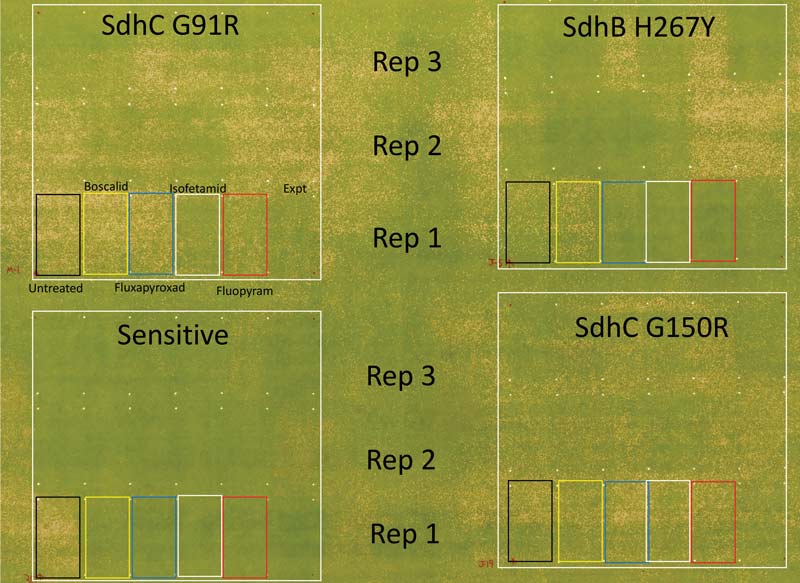
Photo by Geunhwa Jung
Dollar spot, which is caused by Sclerotinia homoeocarpa (now Clarireedia species), is one of the most persistent and resilient diseases on amenity turfgrasses. Repeated applications of fungicides have led to resistance to the benzimidazole, dicarboximide and sterol demethylation inhibitor classes, which has already been reported in dollar spot field populations across North America.
Recent reports of field resistance to the next-generation succinate dehydrogenase inhibitor (SDHI) fungicides have been alarming to golf course superintendents who depend heavily on SDHIs for dollar spot control.
Genetic mechanisms of the SDHI resistance are complex. Research with dollar spot isolates collected from golf courses and research plots experiencing field failure in the U.S. and Japan has revealed that multiple different mutations allow for differential sensitivities to the five SDHI active ingredients labeled for dollar spot control (boscalid, fluopyram, fluxapyroxad, isofetamid and penthiopyrad).
Some of the mutations are highly resistant to all SDHIs, while others are resistant only to some. One type of mutation actually becomes more susceptible to fluopyram. Therefore, where there is suspicion of reduced efficacy of SDHIs, it is important for superintendents to have information on the type of mutations existing on their site before applying SDHIs.
Recommended management strategies include tank-mixing or alternating with partner fungicides with low-risk resistance and limiting the number of applications per season. However, future research should focus on developing an integrated pest management approach for dollar spot management by implementing effective cultural practices and weather-based disease forecasting as well as using molecular diagnostic tools to initiate long-term monitoring of resistant populations.
— Geunhwa Jung, Ph.D., University of Massachusetts Amherst
Teresa Carson is GCM’s science editor.